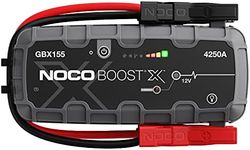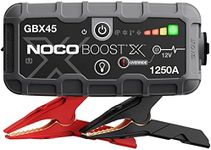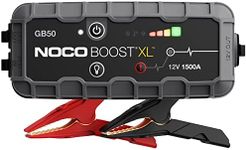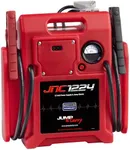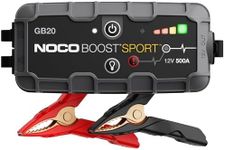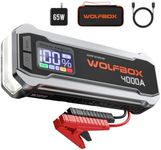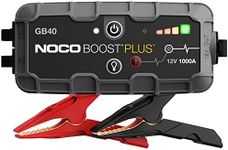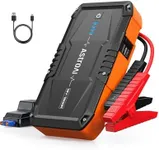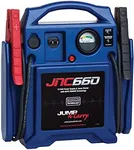Buying Guide for the Best Jump Starters
Choosing the right jump starter can make a big difference when you find yourself with a dead car battery. A jump starter is a portable device that helps you start your vehicle without needing another car. When picking one, it's important to consider your vehicle type, how often you might need it, and how easy it is to use. Understanding the key specifications will help you find a jump starter that fits your needs and gives you peace of mind on the road.Peak AmpsPeak amps refer to the maximum amount of current the jump starter can deliver in a short burst to start your engine. This is important because different vehicles require different amounts of power to start, especially larger engines or those in cold weather. Jump starters with lower peak amps (around 400-600A) are suitable for small cars and motorcycles, while mid-range (700-1000A) can handle most sedans and SUVs. Higher peak amps (over 1000A) are best for trucks, large SUVs, and diesel engines. To pick the right one, check your vehicle’s engine size and type, and choose a jump starter with enough peak amps to reliably start it.
Battery Capacity (mAh or Wh)Battery capacity tells you how much energy the jump starter can store, usually measured in milliamp-hours (mAh) or watt-hours (Wh). This affects how many times you can use it before needing to recharge. Smaller capacities (under 10,000mAh) are fine for occasional use or smaller vehicles, while mid-range (10,000-20,000mAh) suits most car owners. High capacities (over 20,000mAh) are better if you want to jump start multiple vehicles or use the device to charge other electronics. If you travel often or have multiple vehicles, a higher capacity is more convenient.
Portability and SizePortability refers to how easy it is to carry and store the jump starter. Smaller, lighter models are easier to keep in your glove box or under a seat, but may have less power. Larger units might offer more power and features but take up more space. If you have limited storage in your vehicle or want something easy to handle, look for a compact model. If you don’t mind a bit more bulk for extra power, a larger unit could be a better fit.
Safety FeaturesSafety features protect both you and your vehicle during use. Common features include reverse polarity protection (prevents damage if you connect the clamps incorrectly), short-circuit protection, overcharge protection, and spark-proof technology. These are important for preventing accidents and making the jump starter safer for beginners. If you’re not experienced with car batteries, prioritize models with clear safety features and indicators.
Additional FunctionsMany jump starters come with extra features like built-in flashlights, USB ports for charging devices, air compressors, or emergency alarms. These can add convenience, especially if you want a multi-purpose tool for roadside emergencies. Think about what other functions might be useful for you—if you often travel at night, a flashlight is handy; if you want to charge your phone, look for USB ports. Choose a model with features that match your typical needs.
Charging Method and TimeThe charging method refers to how you recharge the jump starter itself, such as via wall outlet, car charger, or even solar panel. Charging time is how long it takes to fully recharge the device. Faster charging is more convenient if you use the jump starter often, while multiple charging options can be useful if you’re on the go. Consider how and where you’ll recharge the device, and pick one that fits your routine.
